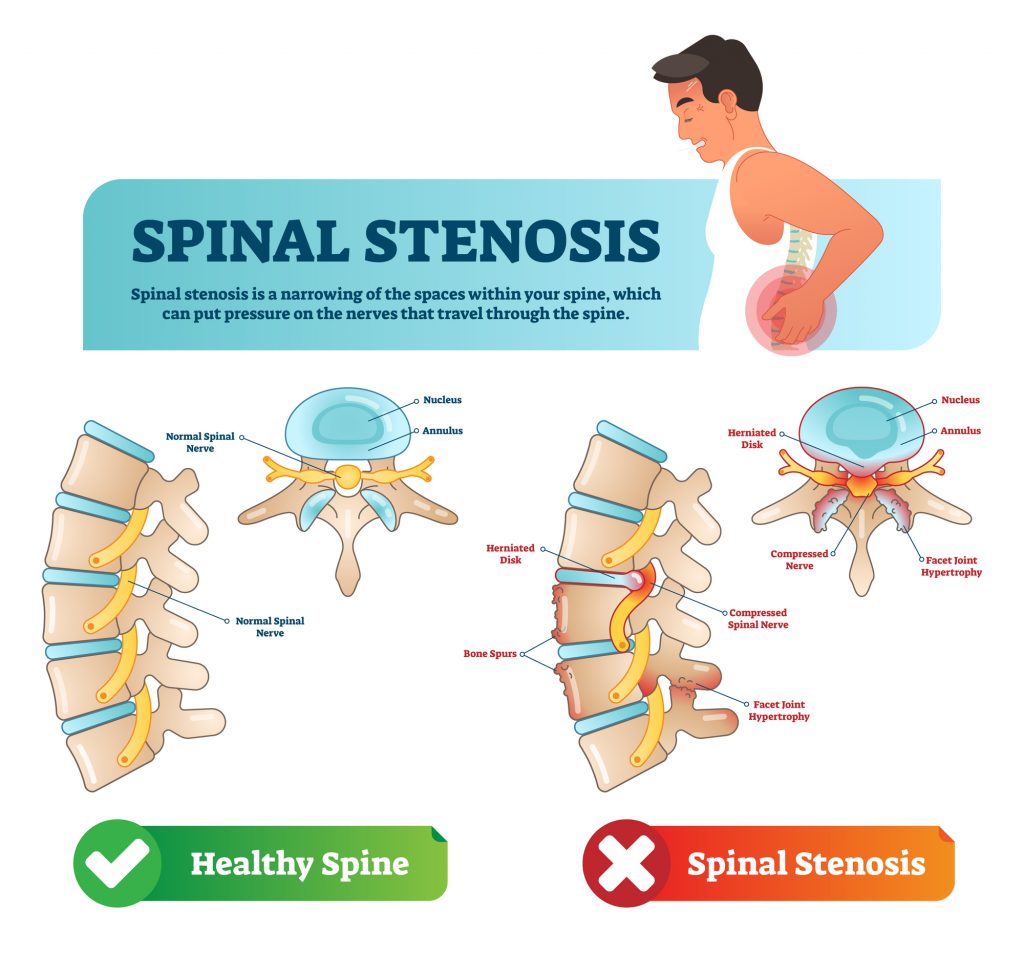Spinal stenosis is a condition characterized by the narrowing of the spinal canal, which puts pressure on the nerves and results in pain, numbness, and muscle weakness. It is a progressive condition, meaning it tends to worsen over time. However, there are certain measures that can be taken to slow down or prevent the progression of spinal stenosis.
Firstly, maintaining a healthy lifestyle is vital in managing spinal stenosis. This includes regular exercise, such as walking, swimming, or low-impact aerobic activities. Exercise helps strengthen the core muscles, which support the spine and alleviate pressure on the nerves. Additionally, maintaining a healthy weight is crucial as excess weight can further burden the spine.
Physical therapy is another effective method to prevent the progression of spinal stenosis. A physical therapist can design a specialized exercise program to improve strength, flexibility, and posture. This can contribute to better spinal alignment and reduce symptoms associated with spinal stenosis.
Furthermore, practicing good posture and body mechanics is essential. This involves maintaining an upright posture, avoiding prolonged sitting or standing, and using proper lifting techniques to reduce strain and pressure on the spine.
Medication can also be prescribed to manage the symptoms of spinal stenosis. Nonsteroidal anti-inflammatory drugs (NSAIDs) can help reduce pain and inflammation, while pain medications may provide temporary relief. However, these medications only address the symptoms and do not stop the progression of the condition.
In some cases, spinal stenosis may require surgical intervention to relieve pressure on the nerves. Surgical options include decompression surgery or spinal fusion, which aim to widen the spinal canal or stabilize the spine. However, surgery is typically reserved for severe cases or when conservative treatments have failed to provide relief.
In conclusion, while spinal stenosis is a progressive condition, there are various methods to slow down or prevent its progression. Maintaining a healthy lifestyle, engaging in regular exercise, practicing good posture, and seeking physical therapy are all essential in managing and alleviating symptoms associated with spinal stenosis. It is important to work closely with healthcare professionals to determine the most suitable treatment approach for individual cases.
What is the best painkiller for spinal stenosis?
Nonsteroidal anti-inflammatory drugs (NSAIDs) reduce pain and inflammation. Examples of over-the-counter NSAIDs include aspirin, naproxen (Aleve), and ibuprofen (Advil, Motrin). Analgesics help relieve pain but don’t affect inflammation. Acetaminophen (Tylenol) is a common analgesic used for spinal stenosis.

What should you stop doing if you have spinal stenosis?
High-impact activities: Activities that involve high-impact, such as jumping, running, or contact sports, should be avoided as they can cause further injury to the spine. Heavy lifting: Heavy lifting can put a lot of stress on your spine and exacerbate your symptoms.Nov 1, 2023
What is the most successful treatment for spinal stenosis?
Laminectomy is a surgery that doctors perform to treat spinal stenosis by removing the bony spurs and the bone walls of the vertebrae. This helps to open up the spinal column and remove the pressure on the nerves.Nov 1, 2023
Can you fix spinal stenosis without surgery?
Many people with mild spinal stenosis find that nonsurgical treatments such as pain medication and physical therapy relieve symptoms and help them remain active. NYU LangoneNYU LangoneThe Family Health Centers at NYU Langone is a community-based program that provides high-quality primary and preventive outpatient care to adults and children regardless of their ability to pay or health insurance status.https://nyulangone.org › family-health-centers-at-nyu-langoneFamily Health Centers at NYU Langone spine specialists work with experts in pain management, rehabilitation, and orthotics to create a treatment plan.
How much do pediatric consultants make in the US?
$61,000 is the 25th percentile. Salaries below this are outliers. $103,000 is the 75th percentile.
What skill do I need to be a pediatrician?
Detail oriented: Patients must receive appropriate treatment and medications. Pediatricians must accurately monitor and record various pieces of information related to patient care. Dexterity: Pediatricians may work with very precise and sometimes sharp tools, and mistakes can have serious consequences.
What’s the highest paid Pediatrician?
– Neonatologist. Salary range: $200,000-$400,000 per year. …
– Pediatric Surgeon. Salary range: $204,000-$400,000 per year. …
– Critical Care Pediatrician. Salary range: $170,000-$220,000 per year. …
– Perinatology Physician. Salary range: $104,500-$220,000 per year. …
– Med Peds.
What is the salary of a pediatric doctor in the US?
How much does a Physician – Pediatrics make in the United States? The average Physician – Pediatrics salary in the United States is $223,120 as of Janu, but the range typically falls between $194,419 and $266,726.

